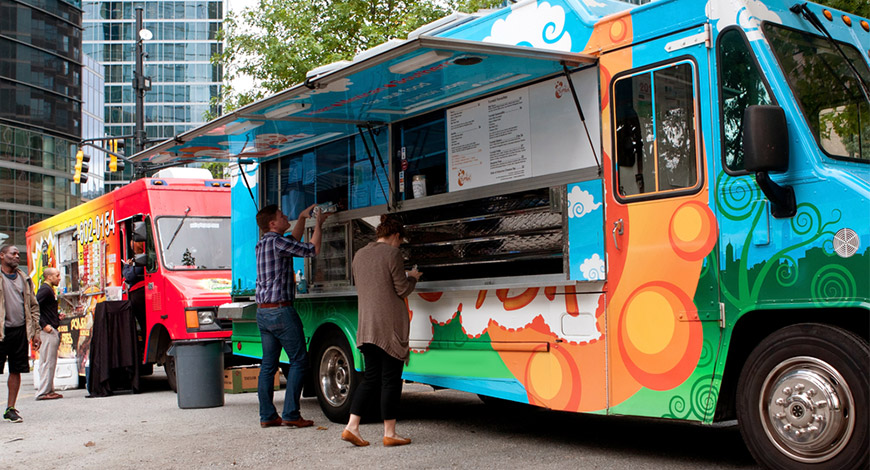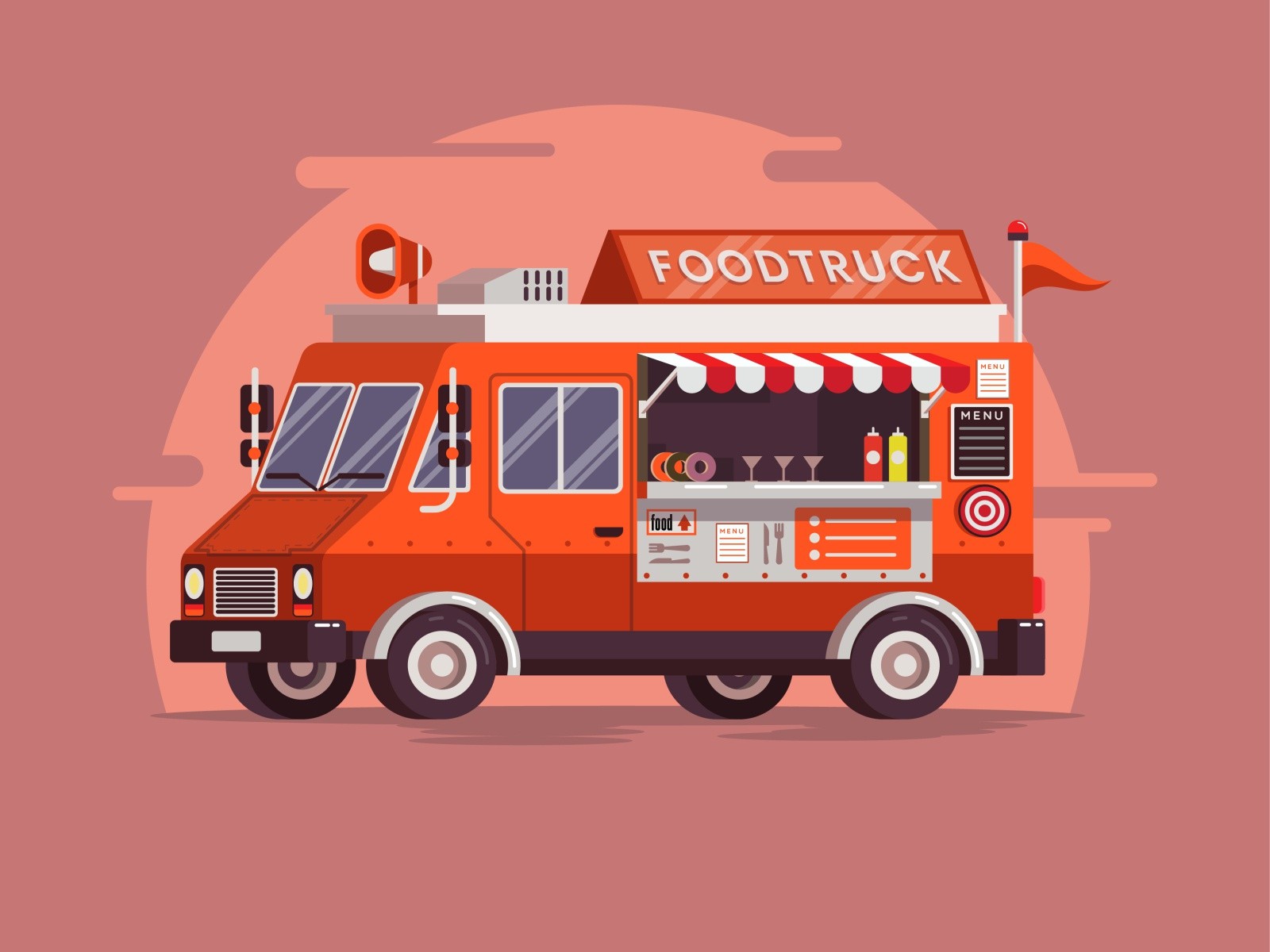Ultimate Guide to Starting and Running a Successful Food Truck or Cart Business
The food truck or cart business has become a booming industry over the last decade. What once might have been seen as a trend has now solidified its place in the food industry, offering entrepreneurs an accessible entry into the culinary world. Whether you’re a seasoned chef or a foodie with a dream, starting a food truck or cart business can be an exciting and profitable venture.
This comprehensive guide will walk you through everything you need to know to start and run a successful food truck or cart business, from planning and funding to operations and growth.
1. The Food Truck Industry: An Overview
A Growing Trend
The food truck industry has seen explosive growth in recent years. In the United States alone, the food truck industry was valued at over $1 billion in 2023, with continued growth expected. The rise of foodie culture, coupled with the convenience and novelty of mobile dining, has made food trucks a favourite for many urban dwellers.
Food trucks and carts offer unique advantages over traditional brick-and-mortar restaurants. They have lower startup costs, greater mobility, and the ability to serve various locations and events. However, they also come with unique challenges that require careful planning and execution.
The Ultimate Guide to Catering Services: Everything You Need to Know
2. Business Planning: Laying the Foundation
Conducting Market Research
Before diving into the food truck business, conducting thorough market research is crucial. Understand your target market, identify your competition, and analyze the local food truck scene.
- Target Market: Who are your potential customers? Are they office workers, students, tourists, or event attendees? Knowing your target market will help you tailor your menu, pricing, and location.
- Competition: Identify existing food trucks in your area. What are they offering, and at what price points? Understanding your competition will help you differentiate your business.
- Location: Location is key to the success of a food truck. Consider areas with high foot traffic, such as business districts, college campuses, or popular tourist spots. However, be mindful of local regulations that might limit where you can park your truck.
Developing a Business Plan
A well-thought-out business plan is essential for the success of your food truck business. It will serve as a roadmap for your venture and is crucial if you plan to seek financing.
- Executive Summary: Provide an overview of your business, including your mission statement, business goals, and the unique value proposition of your food truck.
- Market Analysis: Include the findings from your market research, outlining your target market, competition, and location strategy.
- Menu: Detail the items you plan to offer, including pricing. Consider how your menu will appeal to your target market and differentiate you from competitors.
- Operations Plan: Describe how you will run your food truck on a day-to-day basis, including staffing, supply chain management, and equipment needs.
- Financial Projections: Provide a detailed financial plan, including startup costs, revenue projections, and break-even analysis. Consider the cost of the truck or cart, kitchen equipment, permits, licenses, and initial inventory.
- Marketing Strategy: Outline how you will promote your food truck business. This can include social media marketing, local advertising, participation in events, and collaborations with other businesses.

3. Legal Considerations: Navigating the Red Tape
Licensing and Permits
Starting a food truck business involves navigating various legal requirements, including obtaining the necessary licenses and permits. These can vary widely depending on your location, so it’s essential to research local regulations thoroughly.
- Business License: You’ll need a general business license to operate your food truck. This is typically obtained from your city or county government.
- Health Department Permit: Since you’ll be serving food, you must comply with health and safety regulations. This typically involves passing a health inspection and obtaining a food service permit from your local health department.
- Mobile Vendor Permit: Many cities require food trucks to obtain a mobile vendor permit, which allows you to operate in certain areas. Be aware of any restrictions on where and when you can park your truck.
- Fire Department Inspection: Your truck will likely need to pass a fire safety inspection, especially if you’re using cooking equipment that poses a fire risk.
- Parking Permits: Some cities require special parking permits for food trucks, particularly if you plan to park in public spaces or operate in high-traffic areas.
Insurance
Insurance is a critical component of your food truck business. You’ll need to protect your business, employees, and customers from potential risks.
- General Liability Insurance: This covers accidents or injuries that occur on or around your food truck.
- Commercial Auto Insurance: Since your food truck is a vehicle, you’ll need commercial auto insurance to cover accidents, theft, or damage to your truck.
- Workers’ Compensation Insurance: If you plan to hire employees, workers’ compensation insurance is typically required by law. It covers medical expenses and lost wages if an employee is injured on the job.
- Product Liability Insurance: This protects you if a customer gets sick or injured due to consuming your food.
4. Setting Up Your Food Truck or Cart
Choosing the Right Vehicle
Selecting the right vehicle is one of the most critical decisions you’ll make for your food truck business. The type of vehicle you choose will depend on your menu, budget, and local regulations.
- Food Truck: A full-sized food truck offers more space for equipment and staff but comes with higher costs. It’s ideal for businesses with a more extensive menu or those that require specialized cooking equipment.
- Food Cart: A food cart is smaller and more affordable than a food truck. It’s perfect for businesses with a simpler menu or those just starting. Food carts are also more flexible in terms of location, as they can be easily moved by hand.
- Customization: Once you’ve selected your vehicle, you’ll need to customize it to fit your business needs. This can include installing cooking equipment, refrigeration, storage, and a point-of-sale system.
Equipping Your Food Truck
Your food truck’s equipment will depend on your menu and operational needs. Common equipment includes:
- Cooking Equipment: Grills, fryers, ovens, stovetops, and microwaves are standard in many food trucks. Choose equipment that fits your menu and is energy-efficient.
- Refrigeration: You’ll need refrigeration units to store perishable ingredients. Ensure your refrigeration meets health department standards.
- Storage: Adequate storage for dry goods, utensils, and other supplies is essential. Consider space-saving solutions to maximize your truck’s interior.
- Sinks: Most health departments require food trucks to have a three-compartment sink for washing dishes and a separate handwashing sink.
- Point-of-Sale System: A reliable point-of-sale (POS) system is crucial for processing payments. Consider systems that accept credit cards, and mobile payments, and offer online ordering.
5. Crafting the Perfect Menu
Menu Development
Your menu is the heart of your food truck business. It should reflect your brand, cater to your target market, and be feasible within the constraints of a mobile kitchen.
- Focus on a Niche: Successful food trucks often focus on a specific cuisine or type of food, such as gourmet burgers, tacos, or vegan dishes. A niche menu helps you stand out in a crowded market and attract a dedicated customer base.
- Simplicity is Key: With limited space and equipment, it’s essential to keep your menu simple and manageable. Focus on a few core items that you can execute flawlessly.
- Ingredient Sourcing: Consider sourcing local and seasonal ingredients to enhance the quality of your dishes and appeal to eco-conscious customers.
- Menu Testing: Before launching, test your menu with friends, family, or local events to gather feedback and refine your offerings.
Pricing Your Menu
Pricing is a critical component of your food truck’s success. You’ll need to balance affordability with profitability.
- Cost of Goods Sold (COGS): Calculate the cost of ingredients for each menu item. Aim for a food cost percentage of around 25-35%.
- Market Pricing: Research competitors’ pricing to ensure your menu is competitively priced. Consider your target market’s willingness to pay.
- Portion Control: Maintain consistent portion sizes to control costs and ensure customer satisfaction.
- Specials and Promotions: Offer daily specials or promotions to attract customers during slow periods. Limited-time offers can create a sense of urgency and drive sales.

6. Marketing and Branding Your Food Truck
Building Your Brand
Your brand is more than just a logo or a catchy name; it’s the personality and identity of your food truck. A strong brand will help you connect with customers and stand out in a competitive market.
- Name and Logo: Choose a memorable name that reflects your cuisine and brand identity. Design a logo that is visually appealing and can be easily recognized from a distance.
- Truck Design: Your truck’s exterior is a mobile billboard for your business. Invest in eye-catching graphics and signage that convey your brand’s personality and entice customers to stop by.
- Social Media Presence: Social media is a powerful tool for promoting your food truck. Create profiles on platforms like Instagram, Facebook, and Twitter to share your location, menu, and specials. Engage with customers by responding to comments and encouraging user-generated content.
- Website: A professional website serves as an online hub for your business. Include your menu, operating hours, location schedule, and contact information. Consider adding an online ordering system for customers who prefer to order ahead.
Promoting Your Food Truck
Effective marketing is essential for attracting customers to your food truck. Utilize a mix of online and offline strategies to reach a broader audience.
- Social Media Marketing: Regularly update your social media profiles with photos of your food, behind-the-scenes content, and location updates. Use hashtags to increase visibility and connect with local food communities.
- Email Marketing: Build an email list of loyal customers and send out newsletters with promotions, event schedules, and menu updates.
- Local Events and Festivals: Participating in local events, festivals, and farmers’ markets can expose your food truck to new customers. These events are also great opportunities for networking and building partnerships with other vendors.
- Partnerships: Collaborate with local businesses, such as breweries, coffee shops, or retail stores, to offer joint promotions or events. These partnerships can help you reach new customers and create a sense of community.
- Customer Loyalty Programs: Implement a loyalty program to reward repeat customers. Offer discounts or free items after a certain number of visits to encourage customer retention.
7. Daily Operations: Running a Smooth Ship
Staffing Your Food Truck
Hiring the right team is crucial to the success of your food truck. Your staff will be responsible for preparing food, taking orders, and providing excellent customer service.
- Job Roles: Common roles on a food truck include head chef, line cook, and cashier. Depending on the size of your truck and menu, you may need to hire additional staff.
- Training: Proper training is essential to ensure your staff can operate efficiently in a small space and deliver high-quality food. Focus on food safety, customer service, and time management.
- Employee Retention: The food truck industry can be demanding, with long hours and fast-paced work. Offer competitive pay, flexible schedules, and a positive work environment to retain your staff.
Managing Inventory
Effective inventory management is critical to minimizing waste and maximizing profits.
- Inventory Tracking: Use inventory management software or spreadsheets to track your ingredients and supplies. Regularly review your inventory to identify trends and adjust orders accordingly.
- Supplier Relationships: Build strong relationships with your suppliers to ensure you receive high-quality ingredients at competitive prices. Consider working with local suppliers to reduce costs and support your community.
- Waste Reduction: Implement waste reduction strategies, such as portion control, using leftovers creatively, and donating excess food to local charities.
Meal Prep and Delivery Services: Revolutionizing the Way We Eat
8. Financial Management: Keeping Your Finances in Check
Budgeting and Forecasting
Managing your finances effectively is crucial to the success of your food truck business. Create a budget and financial forecast to guide your spending and ensure profitability.
- Startup Costs: Include all one-time expenses, such as purchasing your truck or cart, equipment, permits, and initial inventory.
- Operating Expenses: Track your ongoing expenses, such as food costs, labour, fuel, insurance, and maintenance. Regularly review your expenses to identify areas where you can cut costs.
- Revenue Projections: Estimate your monthly revenue based on your menu prices, target market, and expected sales volume. Adjust your projections as you gather more data on your actual performance.
Cash Flow Management
Cash flow is the lifeblood of your business. Ensure you have enough cash on hand to cover your expenses and invest in growth.
- Monitoring Cash Flow: Regularly review your cash flow statement to ensure you have enough money to cover your expenses. Identify any cash flow gaps and take steps to address them.
- Reserves and Savings: Set aside a portion of your profits as a reserve fund for unexpected expenses or slow periods. This can help you weather financial challenges without taking on debt.
- Credit and Financing: If you need additional capital to grow your business, explore financing options such as small business loans, lines of credit, or crowdfunding. Be mindful of the cost of borrowing and ensure you can repay any loans.

9. Growth and Expansion: Scaling Your Food Truck Business
Expanding Your Fleet
Once your food truck business is successful, you may want to consider expanding by adding more trucks or carts to your fleet.
- New Markets: Identify new markets or locations where your food truck concept could thrive. This could include neighbouring cities, different types of events, or new customer segments.
- Franchising: If your food truck has a strong brand and proven business model, franchising could be a way to expand quickly. Franchising allows you to leverage other entrepreneurs’ capital and management skills to grow your brand.
Opening a Brick-and-Mortar Location
Many successful food truck owners eventually transition to a brick-and-mortar restaurant. This can provide a more stable income stream and allow you to reach new customers.
- Choosing a Location: If you decide to open a restaurant, choose a location that aligns with your brand and target market. Consider factors such as foot traffic, visibility, and competition.
- Maintaining Your Brand: Ensure your brick-and-mortar location stays true to the brand and identity of your food truck. Customers should recognize the same quality and style they enjoyed from your truck.
10. Challenges and Opportunities in the Food Truck Business
Common Challenges
The food truck business, while rewarding, comes with its own set of challenges.
- Seasonality: Depending on your location, weather conditions can significantly impact your sales. Be prepared to adjust your operations during slower seasons.
- Regulations: Navigating local regulations can be complex and time-consuming. Stay informed about changes in laws and regulations that could affect your business.
- Competition: The food truck industry is competitive, with new trucks entering the market regularly. Continuously innovate and differentiate your business to stay ahead of the competition.
Opportunities for Growth
Despite the challenges, the food truck industry offers many opportunities for growth and success.
- Catering and Events: Expanding into catering and private events can provide a lucrative revenue stream. Many food trucks find success by offering their services for weddings, corporate events, and festivals.
- Product Lines: Consider expanding your brand by offering packaged products, such as sauces, snacks, or meal kits. These can be sold at local markets or online, providing additional income.
- Sustainability Initiatives: Customers are increasingly concerned about sustainability. Implementing eco-friendly practices, such as using compostable packaging, reducing food waste, and sourcing local ingredients, can attract environmentally-conscious customers.
Starting and running a successful food truck or cart business requires careful planning, dedication, and a passion for food. By following the steps outlined in this guide, you can navigate the challenges of the industry and create a thriving business that brings joy to your customers and profits to your bottom line.
The food truck industry is a dynamic and exciting field, offering endless opportunities for creativity and growth. Whether you’re serving up gourmet meals or simple street food, your food truck has the potential to become a beloved fixture in your community. With the right strategy and a commitment to excellence, you can turn your food truck dream into a reality.




Post Comment